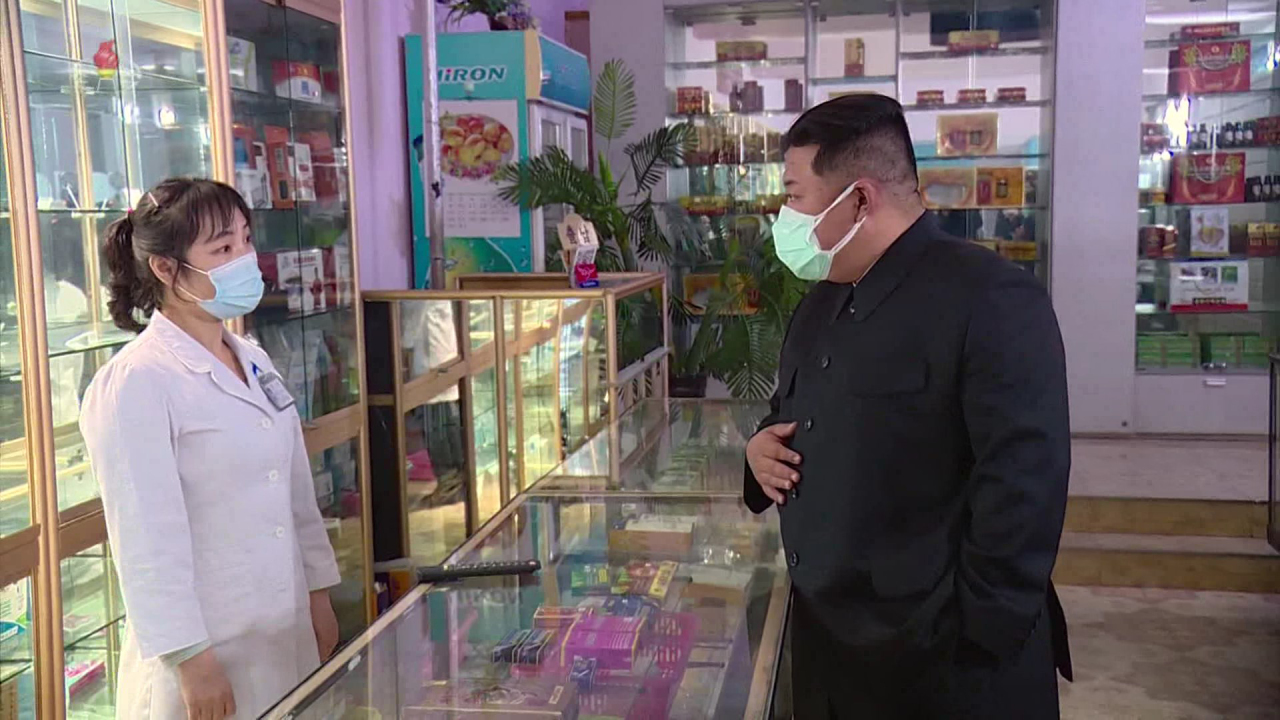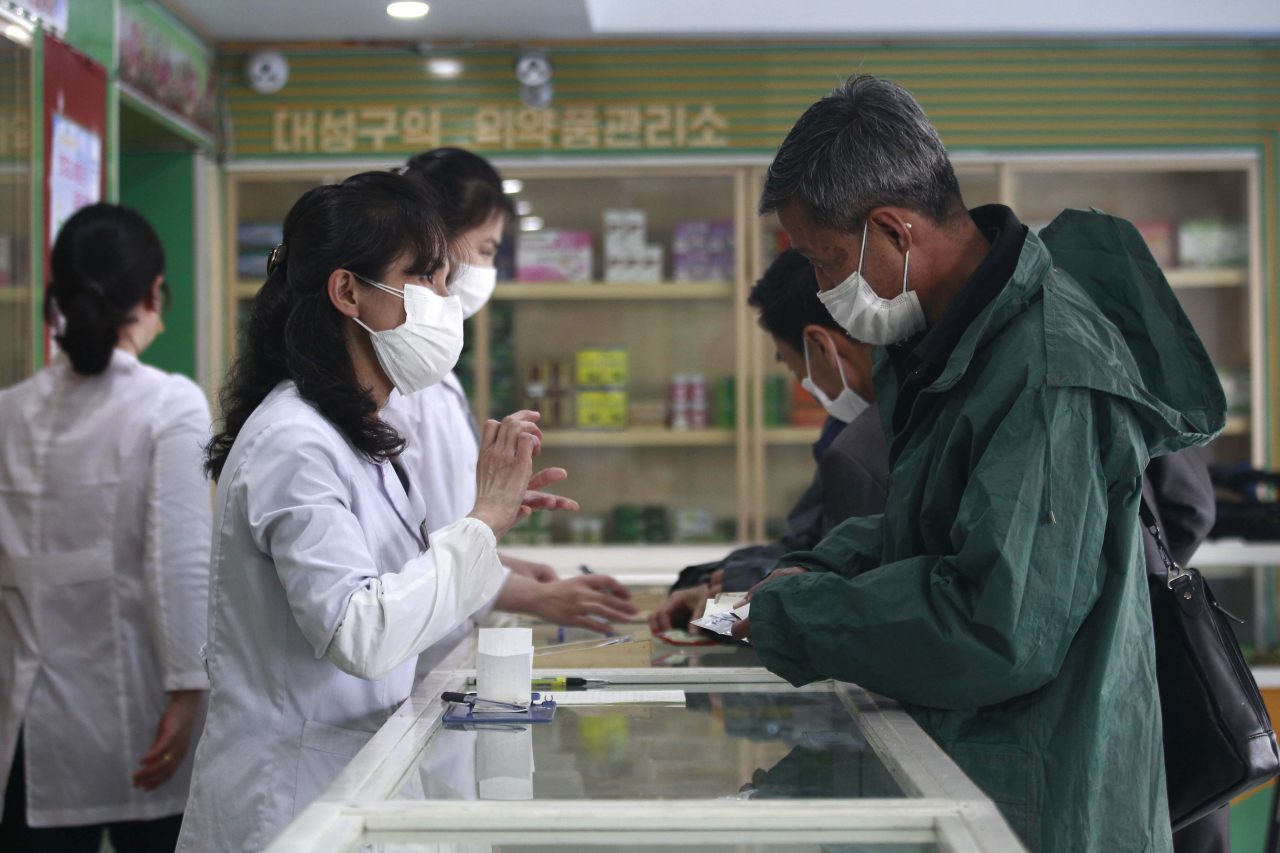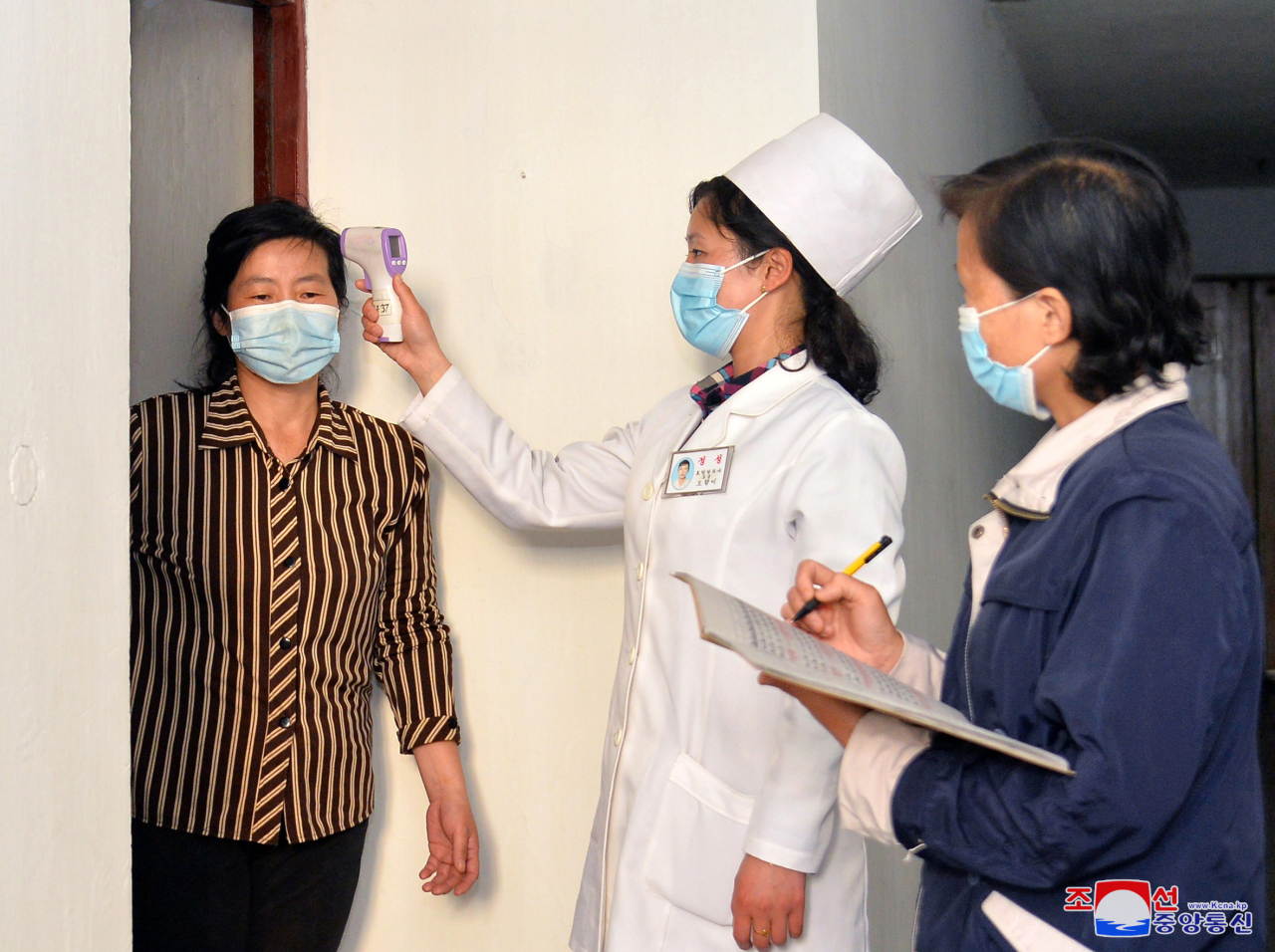 |
In this footage released Monday by the Korean Central Television, North Korean leader Kim Jong-un was seen wearing a blue surgical mask on top of a white mask of an unknown material. (Yonhap) |
 |
In this photo published by the Korea Central News Agency on Tuesday, a medical worker at a pharmacy is seen wearing two layers of face mask. (Yonhap) |
Disproportionately few deaths
Despite around 20,000 to 30,000 cases of “fever” each day, North Korea’s total associated death count is still in the double digits. Just one additional death was newly registered in the last 24 hours, according to the North’s state-run Korean Central News Agency on Thursday.
The 63 deaths attributed to COVID-19 out of 1,978,230 fever cases as of 6 p.m. Wednesday translate to a case fatality rate of 0.00318 percent -- far lower than the 0.18 percent seen in South Korea during the pre-peak stage of its omicron wave in February.
The low number of deaths in North Korea is “not proportional” to the caseloads being reported, experts say.
Because of a population-wide immunological naivete to COVID-19 -- meaning no immunity from natural infection or vaccination --, high prevalence of malnutrition and lack of therapies like antivirals, experts have warned North Korea could face a much higher mortality rate than that observed in other countries.
Dr. Cha Ji-ho, a global health professor at the Korea Advanced Institute of Science and Technology researching North Korea’s pandemic developments, said the numbers “seem too out of proportion to be credible or derive any scientific interpretations from.”
North Korea is also seeing a significantly high proportion of pediatric deaths.
The latest available statistics from the Korean Central Television showed children and adolescents younger than 20 years of age accounted for 30 percent of 56 deaths accumulated up to 6 p.m. Monday in North Korea. In South Korea, less than 1 percent of all known deaths are in those under 20.
This may be partly attributable to poor health status of North Korean children. According to the Global Nutrition Report’s 2017 data, 19 percent of children under 5 years of age in North Korea were stunted or too short for their age usually from undernutrition.
“Fever”
North Korea, which has a limited testing capacity, is only counting people with fever to measure the size of its omicron outbreak.
But fever was present in less than half of symptomatic omicron cases in South Korea, according to Ministry of Health and Welfare’s spokesperson Son Young-rae on May 16. Omicron is known to primarily affect the upper respiratory tract, with the most commonly reported symptoms being sore throat, runny nose and sneezing.
Infectious disease professor Dr. Kim Woo-joo of Korea University said a higher frequency of fever among North Koreans was “probable due their being unvaccinated.”
“But a lot remains opaque, like the definition of what constitutes a fever,” he said.
Up to as recently as Wednesday, the country still has not reported any cases or deaths to the World Health Organization.
 |
A medical worker checks a resident’s temperature using a non-contact thermometer in this photo released by the Korean Central News Agency on Tuesday. (Yonhap) |




![[Herald Interview] 'Trump will use tariffs as first line of defense for American manufacturing'](http://res.heraldm.com/phpwas/restmb_idxmake.php?idx=644&simg=/content/image/2024/11/26/20241126050017_0.jpg)


